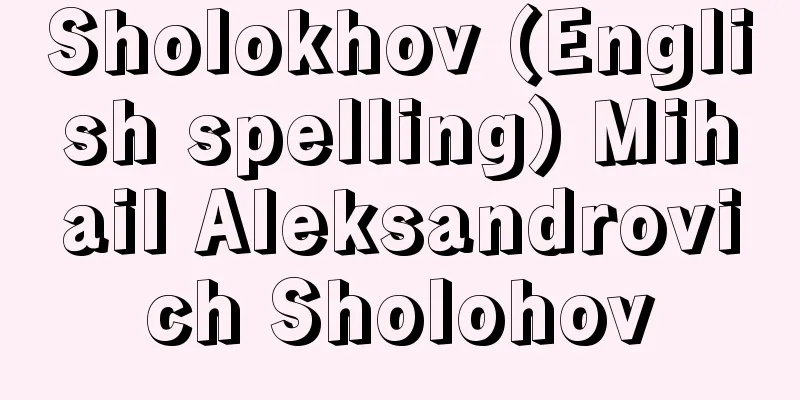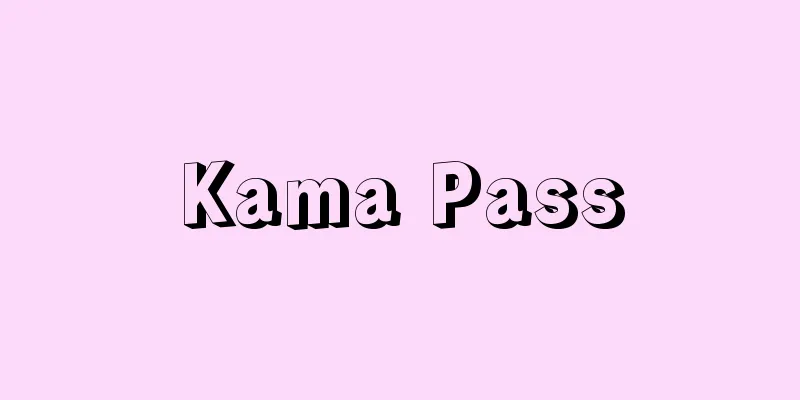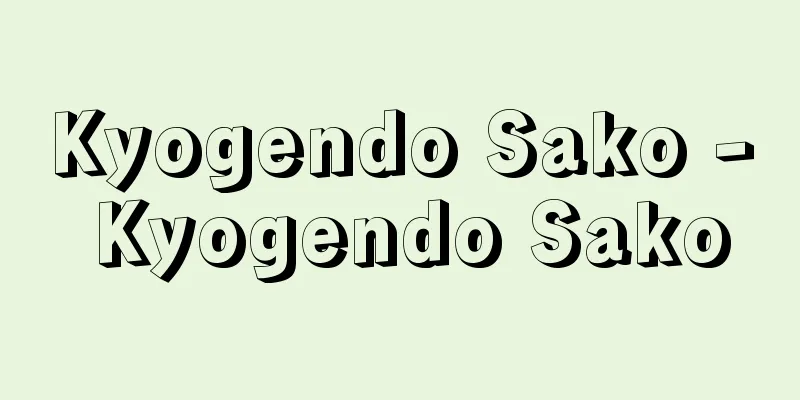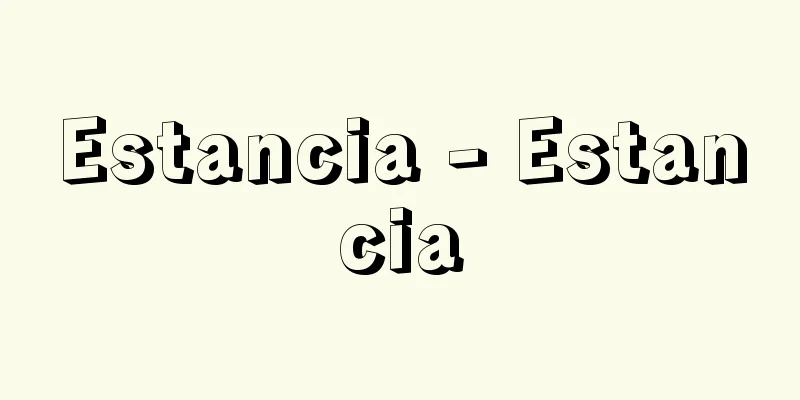Lithuania - Lithuania (English spelling)
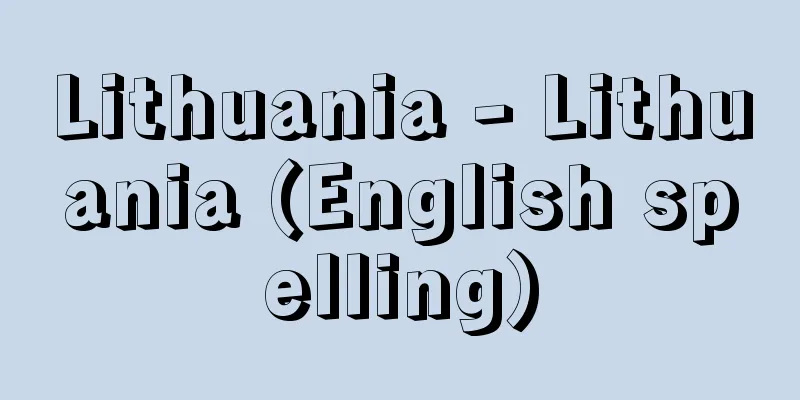
|
An independent country in northeastern Europe, facing the Baltic Sea. Lithuania achieved independence from Imperial Russia in 1918, but was incorporated into the Soviet Union in 1940 under a secret agreement between Germany and the Soviet Union, and spent half a century as a republic. In March 1990, it declared its withdrawal from the Soviet Union, and in September 1991, it became a fully sovereign state again, and joined the United Nations in September. It faces the Baltic Sea to the west, Latvia to the north, Belarus (Belarus) to the east, and Poland and Russia (Kaliningrad Oblast) to the south. The official name of the country is the Republic of Lithuania (Lietuvos Respubliko). It is one of the three Baltic states. It has an area of 65,200 square kilometers and a population of 3,483,972 (2001). The population density is 53 people per square kilometer. The capital is Vilnius (population 542,287, 2001). [Shigeru Yamamoto] NatureLocated in the lower reaches of the Neman River in the East European Plain, the region is made up of flat lowlands with around 4,000 lakes and marshes. It is covered with glacial topography, including moraines, marshes and peat bogs. The average temperature is -4.8°C in January and 17.2°C in July, and the annual precipitation is around 600 mm. The largest river, the Neman River, originates in Belarus, flows north and empties into the Kursk Lagoon on the Baltic Sea. The region is dominated by podzolic soil (45.3%), and forests cover 25% of the region, mostly in the southeastern part of the country. [Shigeru Yamamoto] historyLithuanians, who belong to the Baltic tribes of old lineage in Europe and whose language is the same as Old Prussian and Latvian, form a nearly homogeneous society, mainly in the region from Samogitia (Zimuji) on the Baltic coast to the vicinity of Klaipėda (German name Memel), where they maintain their own Lithuanian culture. On the other hand, the eastern region and southern part of the country, centered on the capital Vilnius (Vilno), are home to Poles, Russians and Belarusians, giving the country an aspect of a multi-ethnic society. Geographically, the Old Prussian region is called Lithuania Minor, and the rest of the region, excluding the Samogitian region, is called Lithuania Greater. The Lithuanians first appeared in history as one of the Baltic tribes in the 13th century. The name Lithuania comes from a Slavic word meaning "to flow," and shares the same origin with Latvia's Lat. This is said to be evidence that the Slavs and the Baltics were the same people in ancient times. As the last pagan people in Europe, they invited the invasion of the Teutonic Knights, who used the banner of the subjugation of pagans, and this prompted them to progress from tribal groups to the stage of national formation. In the mid-13th century, the first unified state was formed under Mindaugas, and in the early 14th century, under Kediminas (reigned 1316-41), he proclaimed himself Grand Duke of Lithuania and began to advance into Rus (present-day Belarus and Ukraine) taking advantage of the decline of the Golden Horde. Under Grand Duke Algirdas (reigned 1345-77), the Rus' princes were subjugated, and the conversion to Eastern Orthodoxy progressed. As the conflict with the Teutonic Knights intensified, Algirdas' son Jogaila (Polish name Jagiellonian), who promoted a union with the Kingdom of Poland, and Algirdas' brother Keistut, who sought to protect Lithuania's independence, fought each other and fell into a state of conflict. In 1386, Jogaila (reigned 1377-92) married Jadwiga, the heir to the Polish throne, and Lithuania entered the era of union with Poland, and Lithuania accepted Roman Catholicism. After the two countries defeated the Teutonic Knights in the Battle of Tannenberg (Grunwald) in 1410, Jogaila's authority was established, but Keistut's son Bitort (Vytautas) led the Lithuanian independence faction and opposed Jogaila. Vytautas (reigned 1392-1430) brought the Grand Duchy of Lithuania to its heyday by curbing the expansion of the Grand Duchy of Moscow in the east, planning a major expedition to the Crimean Khanate, and bringing almost all of Rus under his control. After Vytautas' death, the Grand Dukedom was succeeded by Jogaila's children Wladysław and Casimir, and Lithuania entered into the Renaissance under the Lithuanian-Polish Union, and flourished. The Jagiellonian dynasty came to an end with the death of Sigismund August in 1572, but prior to that, the two countries signed the Union of Lublin in 1569, and Lithuania ceded most of Ukraine to Poland. Although each country maintained its own separate parliament and army, they would essentially live as one nation until the partition of Poland. After the Union of Lublin, Lithuania and today's Belarus formed a single national unit. After the transition to an elective monarchy in 1572, the liberum bet (free veto) was officially recognized for the nobles' class groups, strengthening the power of the estates, and the state began to decline as the royal authority weakened. Parallel to the state's decline was the increasing Polishization of the upper echelons of society. After the partitions of Poland at the end of the 18th century, Lithuania was incorporated into Imperial Russia, but during the Napoleonic Wars, Polish culture flourished in Lithuania, and the arts and sciences at the University of Vilno, which boasted a long tradition since its founding in the Renaissance, flourished. Many Romantic intellectuals, such as historian Joachim Lerebel and national poet Adam Mickiewicz, were produced in Lithuania. Throughout the partitions of the 19th century, Lithuania was the scene of a series of Polish uprisings. When the uprisings were defeated, the landed properties of the landowning aristocrats who had participated in the uprisings were confiscated, and many of the nobles were exiled to Siberia and other places. In particular, after the January Uprising of 1863-64, a thorough repressive policy was implemented under Governor-General Mikhail Muravyov, but at the same time, the emancipation of the peasants was implemented under more favorable conditions than in Russia, and de-Polandization was deliberately attempted. However, as the social status of peasants rose, the political consciousness of Lithuanian peasants also grew rapidly. Reflecting this, in 1883, a Lithuanian-language magazine, Aušra, was published in Tilsit, Prussian territory, edited by nationalist Jonas Basanovicius with the aim of educating the people, and a nationalist movement aimed at independence for ethnographic Lithuania (referring only to areas inhabited by Lithuanians) began to emerge. After the First Russian Revolution in 1905, Lithuanian was recognized as the official language (using the Latin alphabet), and momentum grew for the establishment of an autonomous government and parliament, giving impetus to the independence movement. Meanwhile, local liberal aristocrats, in opposition to the separatist tendencies of ethnic Lithuania, began to take the lead in politics under the leadership of Michał Remel (Mykolas Remelis), a nationalist who aimed to restore historical Lithuania (the area that was once the Grand Duchy of Lithuania, including present-day Lithuania and Belarus) and focused on integration with Belarus. During the First World War, Lithuanian nationalists, supported by Germany, established a council (Taliba) and declared independence on February 16, 1918. However, independence faced difficult problems, such as friction with the emerging Polish state led by Piłsudski, who sought federalism, and relations with the Soviet government. After the Polish army occupied Vilnius in October 1920, the Lithuanian Taliba government moved its capital to Kaunas, but relations with Poland subsequently deteriorated decisively. This completely destroyed the nationalist line, which sought coexistence of various ethnic groups and aimed to revive historical Lithuania. In December 1926, a pseudo-fascist regime was established under Antanas Šmetonas, who led the Taliba government, and not only opposed Poland, but also deepened the conflict with Germany over the possession of Klaipėda. On August 23, 1939, the German-Soviet Non-Aggression Pact was signed, and on September 1, World War II broke out. Lithuania declared neutrality, but succumbed to pressure from the Soviet Union. On June 17, 1940, a socialist government headed by Justas Pareckis was established, and the country was incorporated into the Soviet Union on August 3. When the German-Soviet War broke out, Lithuania came under Nazi German occupation from June 23, 1941, but in February 1944, Lithuania achieved independence, and the following year it was incorporated into the Soviet Union again as a socialist republic. From 1947 to the end of 1949, collective farms (kolkhoz) were established, and sovietization was promoted, with nationalists and the upper classes being forcibly relocated to Siberia. Nationalists who resisted sovietization engaged in partisan activities in the forest areas until 1952. After World War II, approximately 170,000 ethnic Poles living in the Vilnius region were expelled and de-Polinisation intensified. [Mari Hayasaka] PoliticsIn the Gorbachev era, movements for Lithuania's independence from the Soviet bloc rapidly increased in line with the progress of perestroika (reforms). From October 1988, Vytautas Landsbergis led the pro-independence party Sajudis, and passed a resolution in parliament to invalidate the 1940 annexation of the Soviet Union. On March 11, 1990, Lithuania declared independence, but the Soviet government, in an attempt to thwart this, sent in troops to seize television stations and other facilities, massacring 14 resisting citizens. However, with the support of international opinion, the Soviet government recognized Lithuania's independence on September 6, 1991, and the United Nations recognized Lithuania's membership on September 17. Subsequently, the radical and nationalistic policies of the Chairman of the Supreme Council, Landsbergis, led to financial collapse, and Algirdas Brazauskas, who led the former Communist reformists, was elected in the first presidential election after independence in February 1993, and took a more pragmatic approach as president. In 1998, Adamkus, a former American immigrant and environmental expert, was elected president. In the presidential election in January 2003, Paksas, leader of the Liberal Democratic Party, was elected and took office, defeating the incumbent Adamkus. However, Paksas was impeached after receiving large donations from a company with ties to the Russian mafia, which caused problems. Adamkus was elected in the presidential election in 2004. Since independence, the government has changed more than a dozen times, and political instability continues. [Mari Hayasaka] industryAmong the three Baltic states, Poland is blessed with a relatively mild climate and fertile soil, which has allowed agriculture to develop. Dairy farming and livestock farming account for 70% of agricultural production, but Poland also cultivates cereals such as wheat, barley, and rye, root vegetables such as potatoes and sugar beets, industrial crops (plants grown to be used as raw materials for crafts and industry) such as flax and rapeseed, and vegetables. Lithuania is not blessed with natural resources, and industrial development has lagged behind other countries such as Estonia and Latvia. 75% of industrial production is concentrated in five major cities, including the capital Vilnius. Silk weaving and chemical industries are thriving in Kaunas, while fishing, seafood processing, and papermaking are thriving in Klaipeda. Machinery and metal processing industries are also well developed, producing machine tools, precision machinery, electronics products, radios, and televisions. The chemical industry produces chemical fertilizers, synthetic fibers, and sulfuric acid, while the pulp and paper industry has developed based on abundant forest resources. Wool textiles, cotton cloth/sewing, and shoemaking are important light industries, which have been developed since ancient times, and food processing is characterized by meat, dairy products, and seafood processing. After the collapse of the Soviet Union, the regional division of labor system collapsed, making it difficult to secure industrial raw materials and energy, and the country lost most of its export destinations for electrical and electronics products and agricultural products. This led to high inflation, with industrial production falling by 50% and agricultural production by 30%, leading to an economic crisis. As the privatization of state-run enterprises progressed, the economy gradually improved. The inflation rate fell from 1,100% in 1992 to 35% in 1995. In 1992, Russia joined the International Monetary Fund (IMF), and the following year introduced a new currency, the litas. The country actively sought to further strengthen its ties with Nordic countries and the European Union (EU), including joining NATO (North Atlantic Treaty Organization). In 2004, it joined the EU. [Shigeru Yamamoto] residentsLithuania is an independent country founded by Lithuanians, who speak one of the Baltic languages belonging to the Indo-European language family. The ethnic composition is multi-ethnic, including Lithuanians (81.4%), Russians (8.3%), Poles (6.9%), Belarusians (1.5%), Ukrainians, and Jews (2000), but the country is characterized by a high proportion of Lithuanians, the major ethnic group in the former Soviet Union. As it is the southernmost of the three Baltic states, there has been little influx of Russians, and the ratio has remained almost unchanged throughout history. The population and cities are widely distributed throughout the country, with 68% of the urban population (1994). The capital, Vilnius, is the largest city in the southeast of the country and is the political, economic, and cultural center. Lithuania has had close ties with Poland historically, and the area around the capital is also home to many Polish minorities. Other major regional cities include the historic city of Kaunas (population 378,943), Klaipeda (192,954) on the Baltic Sea, Šauliai (133,883), and Panevezys (119,749) (2001). [Shigeru Yamamoto] "Ukraine: Seeking to Reconstruct History" by Mari Hayasaka (1994, Libroport) [References] | | | | | | | | | | | [Supplementary material] |"> Lithuanian flag ©Shogakukan Illustration/Shogakukan Creative "> Lithuania location map Source: Shogakukan Encyclopedia Nipponica About Encyclopedia Nipponica Information | Legend |
|
ヨーロッパ北東部、バルト海に臨む独立国。リトアニアは帝政ロシアから1918年に独立を達成したが、独ソ間の密約で40年にソ連に編入され、その一共和国として半世紀の時を刻んだ。90年3月ソ連から離脱を宣言し、91年9月ふたたび完全な主権国家となると同時に、9月国連に加盟した。西はバルト海に面し、北をラトビアに、東をベラルーシ(白ロシア)に、南はポーランドとロシア(カリーニングラード州)に接している。正式国名はリトアニア共和国Lietuvos Respubliko。いわゆるバルト三国の一つ。面積6万5200平方キロメートル、人口348万3972(2001)。人口密度は1平方キロメートル当り53人。首都はビリニュス(人口54万2287、2001)。 [山本 茂] 自然東ヨーロッパ平野のネマン川下流部にあり、約4000の湖沼群をもつ平坦(へいたん)な低地からなる。モレーン(氷堆石(ひょうたいせき))や湿地、泥炭地など氷河性の地形に覆われている。平均気温は1月零下4.8℃、7月17.2℃、年降水量は約600ミリメートル。最大の河川ネマン川はベラルーシに源を発し、北流してバルト海のクルスク潟(がた)に注ぐ。ポドゾル土が多く(45.3%)、森林は全土の25%で南東部に多い。 [山本 茂] 歴史ヨーロッパのなかでも古い系統のバルト諸族に属し、言語的にも古プロセイン語やラトビア語と同系統の言語をもつリトアニア人が、固有のリトアニア文化を保持するバルト海沿岸部のサモギティア(ジムージ)地方からクライペダ(ドイツ名メーメル)近辺に至る地域を中心にほぼ均質な社会を構成している。一方、首都ビリニュス(ビルノ)を中心とする東部地方および南部にはポーランド人、ロシア人やベラルーシ人を擁し、多民族社会としての側面をもっている。 地理的にみて、古プロセイン地域を小リトアニアとよび、サモギティア地方を除くそれ以外の地域全体を大リトアニアとよぶ。リトアニア人がバルト諸族の一つとして歴史に登場するのは13世紀である。リトアニアという呼称は、「流れる」という意味のスラブ系のことばに由来し、ラトビアのラトと起源を共有する。このことは太古の昔にはスラブ系とバルト系とは同一民族であったことの論拠とされている。ヨーロッパ最後の異教民族であったために、異教徒討伐を旗印に掲げたドイツ騎士団の侵攻を招き、それに刺激されて部族集団から国家編成の段階へ進んだ。13世紀中葉、ミンダウガスの下で最初の統一国家が形成され、続く14世紀初頭のケディミナス(在位1316~41)の代にリトアニア大公位を称し、キプチャク・ハン国の衰退に乗じてルーシ(現ベラルーシ、ウクライナ方面)への進出を開始した。大公アルギルダス(在位1345~77)の下でルーシの諸侯を服属させるにつれ、東方正教会化が進んだ。ドイツ騎士団との抗争が激しさを増すにつれて、ポーランド王国との連合を進める、アルギルダスの息子ヨガイラ(ポーランド名はヤギェウォ)とリトアニアの独立性を守ろうとする、アルギルダスの弟ケイストゥートとが争い、両派に分かれて対立状態に陥った。1386年にヨガイラ(在位1377~92)はポーランドの王位継承者ヤドビガと結婚して、ここにリトアニアはポーランドとの連合時代を迎え、リトアニアはローマ・カトリックを受け入れた。1410年のタンネンベルク(グルンバルト)の戦いで両国はドイツ騎士団を破ってからヨガイラの権威が確立するが、ケイストゥートの息子ビトルト(ビタウタス)はリトアニアの独立派を率いてヨガイラと対抗した。ビタウタス(在位1392~1430)は東方のモスクワ大公国の伸長を抑え、クリミア・ハン国への大遠征を企て、ルーシのほぼ全域を支配下に治めるなど、リトアニア大公国の全盛期をもたらした。 ビタウタスの死後、大公位はヨガイラの子供たちウワディスワフとカジミェシュに継承され、リトアニア・ポーランド連合国家体制の下でルネサンスを迎えたリトアニアは栄華を極めた。1572年にジグムント・アウグストが死んでヤギェウォ朝は断絶するが、それに先だって1569年に両国間でルブリンの合同が結ばれ、リトアニアはポーランドにウクライナの大半を譲り、それぞれ別個の議会と軍隊を維持するものの、ポーランド分割に至るまで実質的に一つの国家としての歴史を歩むことになる。ルブリンの合同以後、リトアニアは今日のベラルーシとともに一つの国家単位を構成することになる。1572年に選挙王政に移行してからは、士族身分団体のためにリベルム・ベト(自由拒否権)が公認されて身分制議会の権限が強まり、王権の弱体化にともない国家は衰退し始めた。国家の衰退と並行して社会の上層部のポーランド化が一段と進んだ。 18世紀末のポーランド分割を経て、リトアニアは帝政ロシアに編入されたがナポレオン戦争期を挟んで、むしろポーランド文化はリトアニアにおいて開花し、ルネッサンス期に設立されて以来の伝統を誇るビルノ大学の学芸は大いに栄えた。歴史家ヨアヒム・レレベルや国民詩人アダム・ミツキェビッチ等のロマン派の知識人を多数輩出した。19世紀の分割時代を通じて、一連のポーランド蜂起(ほうき)の舞台となった。蜂起が敗北すると、蜂起に加担した地主貴族の土地財産は没収され、多くの士族らがシベリアなどへの流刑に処せられた。とくに1863~64年の一月蜂起以後は、総督ミハイル・ムラビヨフの下で徹底した弾圧政策がとられ、しかしその一方で本国ロシアよりも有利な条件で農民解放が実施され、脱ポーランド化が意図的に図られた。とはいえ農民の社会的地位の上昇とともに、リトアニアの農民の政治意識が急速に高まった。これを反映して、1883年に民衆の啓蒙(けいもう)を目的としたリトアニア語の雑誌『黎明(れいめい)Aušra』が、民族主義者ヨナス・バサノビチウスの編集によりプロイセン領ティルジットで創刊され、民族誌的リトアニア(リトアニア人の居住地域のみをさす)の自立を目ざす民族主義運動が勃興(ぼっこう)した。1905年のロシア第一次革命を経てリトアニア語の公用語(ラテン文字の使用)化が認められ、自治政府の設立や議会開設の気運が高まり、独立運動へ弾みがついた。一方、在地の開明派貴族は、リトアニアの民族誌的リトアニアの分離独立傾向に対抗して、ベラルーシとの一体化を主軸とした、すなわち歴史的リトアニア(かつてのリトアニア大公国領、現在のリトアニアとベラルーシを含む地域をさす)の復活を目ざす郷土派ミハウ・レメル(ミコラス・レメリス)を先頭に政界を指導しはじめる。 第一次世界大戦中、ドイツに支援されてリトアニアの民族主義者は評議会(タリバ)を設け、1918年2月16日に独立を宣言した。しかし、独立にあたっては、連邦化を求めるピウスツキが指導する新興ポーランド国家との軋轢(あつれき)やソビエト政権との関係など、難問を抱えた。1920年10月のポーランド軍によるビリニュス占領によりリトアニア・タリバ政権はカウナスに首都を移すが、以後ポーランドとの関係は決定的に悪化した。諸民族の共存共生を求め、歴史的リトアニアの復活を目ざした郷土派の路線は、これで完全に破綻(はたん)した。1926年12月にタリバ政権を率いるアンタナス・シュメトナスの下で疑似ファシズム体制が成立し、ポーランドと対抗するのみならず、クライペダの領有をめぐってドイツとの対立も深めた。1939年8月23日の独ソ不可侵条約の締結、そして9月1日の第二次世界大戦の勃発(ぼっぱつ)の際にはリトアニアは中立を宣言したが、ソ連の圧力に屈し、1940年6月17日、ユスタス・パレツキスを首班とする社会主義政権が誕生し、8月3日にソ連に編入された。独ソ戦が勃発すると、1941年6月23日からナチス・ドイツの占領下に置かれたが、1944年2月にリトアニアは独立を果たし、翌年ふたたび一社会主義共和国としてソ連に編入された。1947年から49年末にかけて集団農場(コルホーズ)化の実施に伴い、民族主義者や上層階級がシベリアへ強制移住させられるなど、ソビエト化が推進された。ソビエト化に抵抗する民族主義者は、1952年まで森林地帯でパルチザン活動を展開した。第二次世界大戦後には、ビリニュス地方に居住していたポーランド系住民約17万人が追放され、非ポーランド化が強化された。 [早坂真理] 政治ゴルバチョフ時代に入り、ペレストロイカ(改革)の進展に応じてリトアニアではソ連圏からの分離独立の動きが急速に高まった。1988年10月からビタウタス・ランツベルギスが独立派サユディスを率い、議会において1940年のソビエト編入を無効とする決議を行った。1990年3月11日、リトアニアは独立を宣言するが、これを阻止しようとするソビエト政府は軍隊を派遣してテレビ局などを制圧し、抵抗する市民14名が虐殺された。しかし、国際世論の支援もあって、ソビエト政府は91年9月6日リトアニアの独立を承認し、また国連は9月17日リトアニアの加盟を認めた。その後、最高会議議長であるランツベルギスの急進的で民族主義な政策は財政破綻を招き、旧共産党系改革派を指導していたアルギルダス・ブラザウスカスが93年2月、独立後初の大統領選挙で当選し、大統領として現実路線を歩んだ。98年、元アメリカ移民で環境問題専門家のアダムクスが大統領に選出された。2003年1月の大統領選挙では、現職であったアダムクスを破り、自由民主党党首パクサスが当選、就任した。しかし、パクサスはロシアマフィアと関係のある企業から多額の献金を受けていたために問題となり罷免(ひめん)。04年に行われた大統領選挙ではアダムクスが当選した。独立以来十数回内閣がかわるなど政情不安が続いている。 [早坂真理] 産業バルト三国のなかでは比較的温和な気候と肥沃(ひよく)な土壌に恵まれ、農業が発達した。酪農と畜産が農業生産の7割を占めているが、小麦、大麦、ライ麦などの穀類、ジャガイモ、テンサイなどの根菜、亜麻(あま)、菜種などの工芸作物(工芸や工業の原料にするために栽培される植物)、野菜などが栽培されている。 リトアニアは資源に恵まれず、他のエストニアやラトビアに比して工業発展が遅れていた。工業生産の75%が、首都ビリニュスなど五つの主要都市に集中している。カウナスは絹織物、化学工業が、クライペダは漁業、水産加工業、製紙業が盛んである。また、機械・金属加工業も発展し、工作機械、精密機械、エレクトロニクス製品、ラジオ、テレビなどを生産している。化学工業では化学肥料、化繊、硫酸などを、紙パルプ工業は豊富な森林資源を基礎に発展している。古くから発展した軽工業では、毛織物、綿布・縫製、製靴が重要で、食品加工では食肉、酪製品、水産加工に特色がある。 ソ連解体後、地域分業システムが崩壊したため、工業原料やエネルギーの確保が困難となり、電機・エレクトロニクス製品や農産物の輪出先の大半を失った。そのためインフレが高進し、工業生産は5割、農業生産は3割減と落ち込み、経済危機を迎えた。国営企業の民営化が進められるのに伴って、経済も徐々に好転してきた。インフレ率は1992年の1100%から95年には35%に下がった。1992年にはIMF(国際通貨基金)に加盟し、翌年に新通貨リタスを導入し、NATO(北大西洋条約)加盟など北欧諸国やEU(ヨーロッパ連合)との関係のいっそうの緊密化を積極的に進めた。2004年、EU加盟。 [山本 茂] 住民インド・ヨーロッパ語族に属するバルト語派の一つ、リトアニア人がつくる独立国である。民族構成は、リトアニア人(81.4%)、ロシア人(8.3%)、ポーランド人(6.9%)、ベラルーシ人(1.5%)、ウクライナ人、ユダヤ人など多民族が居住しているが(2000)、旧ソ連の中では主要民族であるリトアニア人の比重が高いことが特徴である。バルト三国のもっとも南に位置するため、ロシア人の流入が少なく、歴史的にその比率はほとんど変化がなかった。人口や都市は国土に広く分散しており、都市人口の比率は68%(1994)。首都ビリニュスは国の南東部にある最大の都市で、政治、経済、文化の中心地である。リトアニアは歴史的にポーランドと関係が深かったが、少数民族のポーランド人が多く住むのも首都周辺の地域である。そのほかのおもな地方都市では古い歴史的都市であるカウナス(人口37万8943)、バルト海に臨むクライペダ(19万2954)、シャウリャイ(13万3883)、パネベジス(11万9749)などがある(2001)。 [山本 茂] 『早坂真理著『ウクライナ――歴史の復元を模索する』(1994・リブロポート)』 [参照項目] | | | | | | | | | | | [補完資料] |"> リトアニアの国旗 ©Shogakukan 作図/小学館クリエイティブ"> リトアニア位置図 出典 小学館 日本大百科全書(ニッポニカ)日本大百科全書(ニッポニカ)について 情報 | 凡例 |
<<: Lithuanian - Lithuanian (English spelling)
Recommend
Aδ Fiber - Aδ Fiber
…When you touch your toe with a freshly extinguis...
Iona [island] - Aiona
…born in Donegal as a member of the royal family....
Naukenin - petitioner
A person who is registered in the land survey boo...
Red book - Akahon
A type of kusazoshi (picture book) from the mid-E...
Nativistic movements; nativism
Generally, this refers to a religious nationalist ...
Peperomia griseoargentea (English spelling) Peperomiagriseoargentea
… [Takabayashi Masatoshi]. … *Some of the termino...
The Tale of the Farmer - Starch Story
A kana zoshi (traditional Japanese story). Author ...
marginal principle
… [Price formation by private companies] The main...
Martin Heinrich Klaproth
German analytical chemist. Born in Wernigerode, K...
Conflict
A form of conflict between people. It can be thoug...
Kuril Current
…The common name for the Kuril Current. It was na...
Worsaae (English spelling) Jens Jacob Asmussen Worsaae
Danish archaeologist. He served as director of th...
《Fatalist Jack and his master》
…He then wrote “Human, Good or Bad” (1770-84, unp...
Pharyngitis
... Most cases are caused by rhinoviruses or coro...
Campins, LH - Campins
...The government issued a special organizational...
